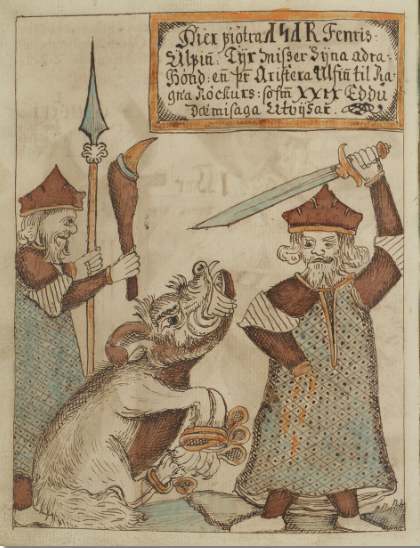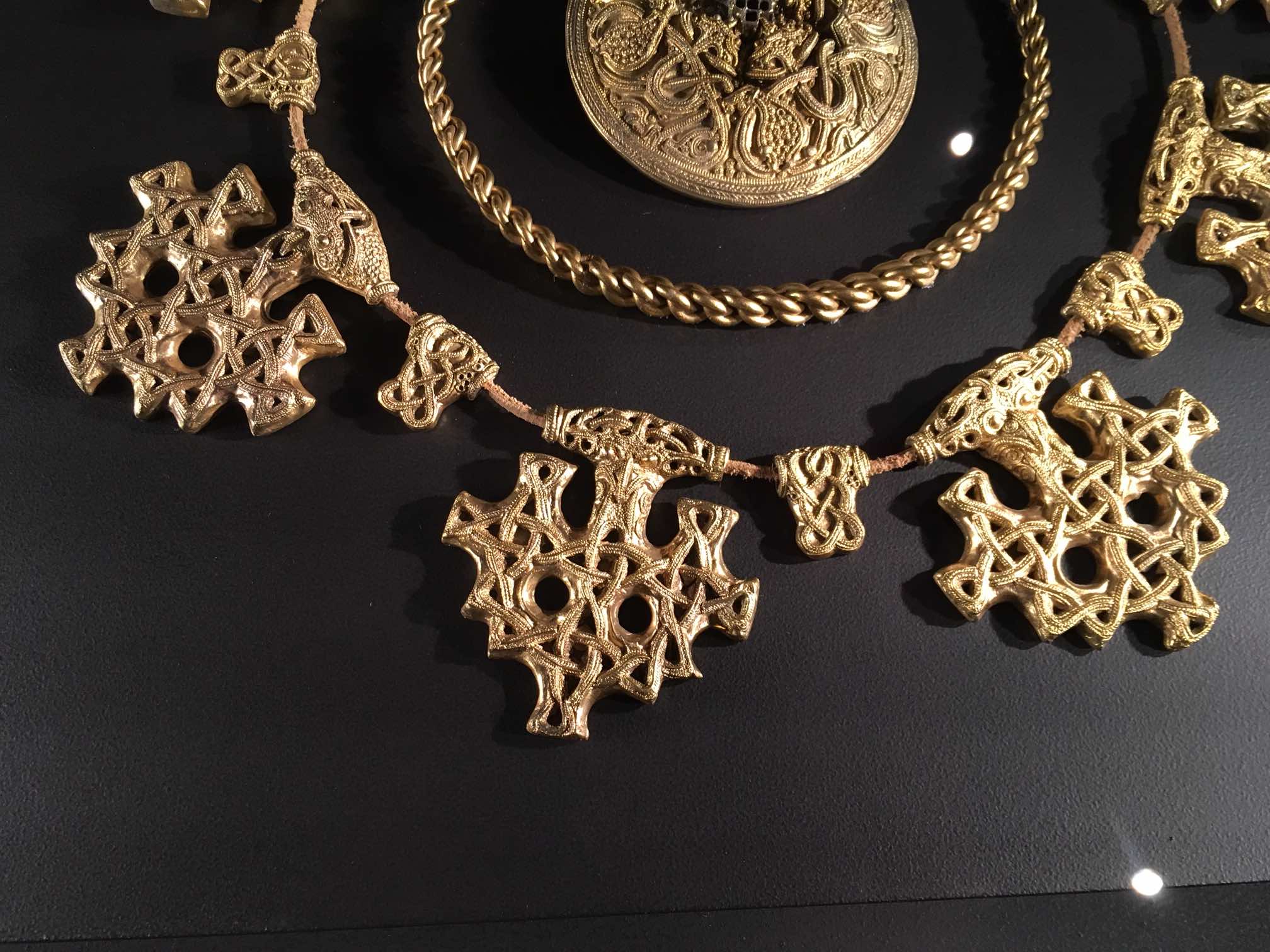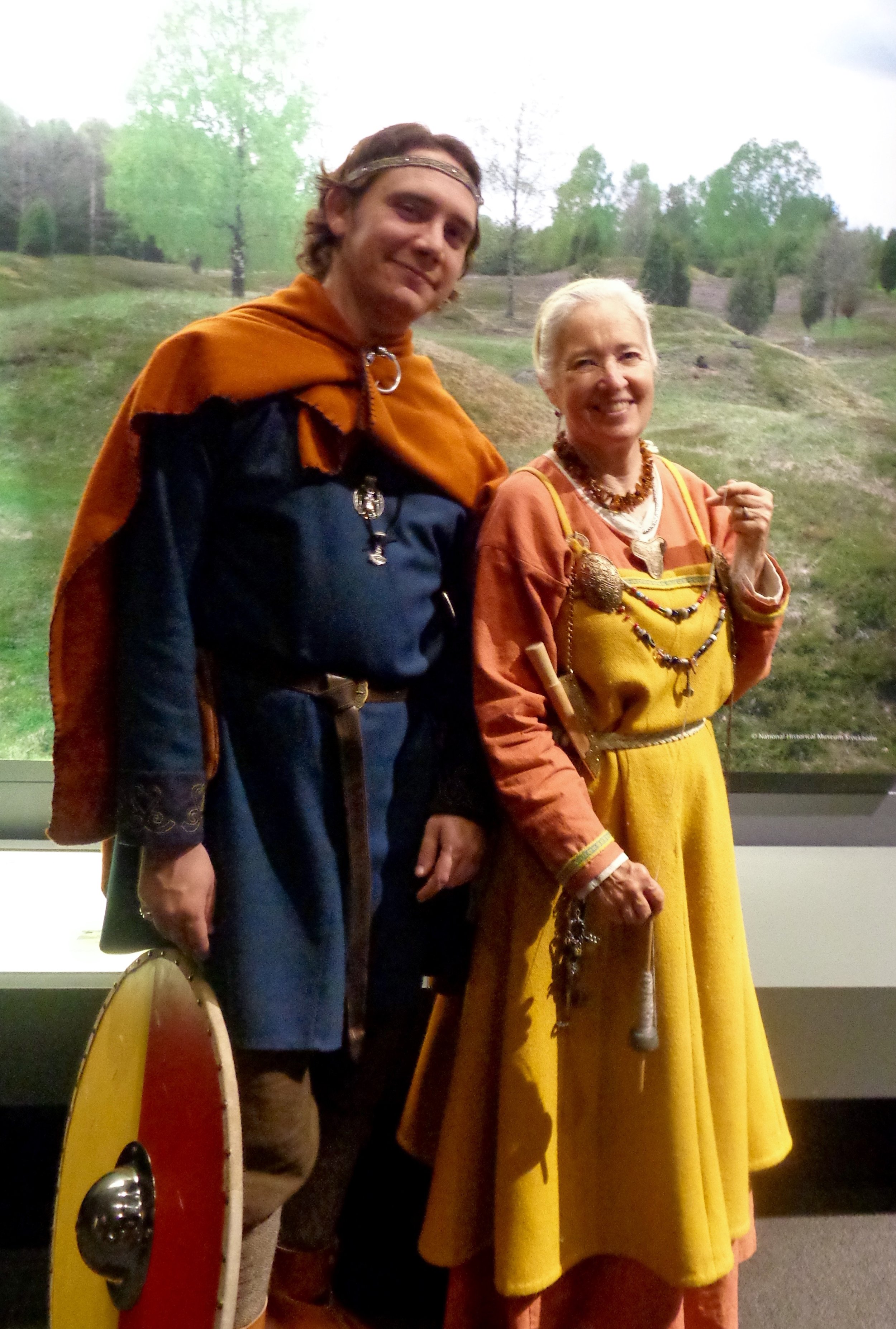Unbound Writers Lisa Mahoney and CS Peterson went to “Vikings: Beyond the Legend” at the Denver Museum of Nature and Science to view the exhibit of Viking art and life. While there, they discovered that Vikings did not wear horns on their helmets and discussed Neil Gaiman’s new retelling of Norse Mythology.
Lisa Mahoney: The last time I read any Norse mythology was probably in high school, though reading a draft of CS Peterson's novel-in-progress led me to dive into Wikipedia to learn more about the Norse world tree, Yggdrasil.
CS Peterson: When I was little I liked Norse myths because the girls got to play with swords too in those stories. There weren’t a lot of women stuck in towers waiting to be saved. Norse mythology is still a constant presence in my teaching life—at least one of my students will pick Vikings or swords every year. It might be because they know they’ll get to practice axe throwing and have a visit with the blacksmith. There’s nothing better than hitting red-hot metal with a hammer when you’re eight years old.
LM: It’s pretty clear that Neil Gaiman has been fascinated with these tales since boyhood. In his introduction, he explains his early love of Norse mythology:
“In addition I learned, the Norse gods came with their own doomsday: Ragnarok, the twilight of the gods, the end of it all. The gods were going to battle the frost giants, and they were all going to die. Had Ragnarok happened yet? Was it still to happen? I did not know then. I am not certain now.
It was the fact that the world and the story ends, and the way that it ends and is reborn, that made the gods and the frost giants and the rest of them tragic heroes, tragic villains. Ragnarok made the Norse world linger for me, seem strangely present and current, while other, better documented systems of belief felt as if they were part of the past, old things.”
Lisa tries a taste of the mead of poetry in preparation for this summer's LitFest.
These gods come from a cold, hard world, one with little pity. A cow licked an ice block to free the ancestors of the gods.
CSP: Try saying the word “Ginnungagap” ten times without stopping. Go ahead, try. That was the void between the ice where everything gets started in the ancient Nordic cosmos.
LM: I’d just reread parts of Gaiman's American Gods, a novel full of lush descriptions of fantastical places like carousel rides in amusement parks, lusty sex scenes with voluptuous goddess, and detailed fight sequences. In Norse Mythology I was struck by how simply and clearly Gaiman narrates these tales. For the most part, we rarely sense Gaiman’s lens. Some exceptions include humorous or sarcastic dialogue. For example, when Thor’s wife’s hair goes missing overnight in the tale, “The Treasures of the Gods," she asks why he believes Loki is behind the theft.
“Because,” said Thor, “When something goes wrong the first thing I always think is, it is Loki's fault. It saves a lot of time.”
Later when Loki is trying to trick a dwarf, Gaiman writes: “Loki looked as guileless as he could, which was amazingly guileless.”
The wolf Fenrir with Týr's severed hand in his mouth and a god, who might be Þórr, holding a spear and a spiked club, from the Binding of Fenrir myth in Gylfaginning in Snorri's Edda. Jakob Sigurðsson 1727-1779.
CSP: I love listening to Gaiman’s voice. The first time I heard him reading was the audio version of The Ocean at the End of the Lane. When I read his Norse Mythology I can hear the cadence and rhythm that he brings to storytelling. The conceit of this book is that he is retelling these stories to his little boy. The stories are kept pretty PG. When Loki gets toasted and shaves off Sif’s hair, Gaiman has Thor talk about why lovely Sif would be too embarrassed to remain bald. He says, “People will think that her head was shaved for punishment. That she did something she should not have done, did it with someone she should not have.” I can just picture a precocious child reading this book and passing right over that sentence, then reading these stories again as an older teen and finding a darker hint about life in Viking times. He does the same thing in the story, “The Mead of Poets.” Gaiman came almost to the end of the story, and I thought he might just skip the part about where bad poetry comes from, but then he says: “But that is not quite the whole story. There is one more thing to tell you. The delicate among you should stop your ears, or read no further.” And he proceeds to relate the tale of the noble all-father’s wettest fart.
LM: And every now and then you sense Gaiman there, giving us a nugget, like in the story, “Freya's Unusual Wedding,” when Thor is stuffing himself at a wedding meal while disguised as a bride to trick a giant. The bridegroom “took a deep breath and watched Thor inhale another whole salmon and pull a salmon skeleton out from under his veil. It was like watching a magic trick. He wondered what the obvious explanation was.”
And Gaiman is free to let his prose soar in this description of Hymir, the giant king. “His beard was like a forest of ice-covered trees in mid-winter, his eyebrows like a field of thistles, his breath as rank and foul as a midden in the bog.” At other times we sense him there as our interpreter, or our guide. “Seldom do those who are silent make mistakes,” he writes. And here: “but dreams know more than they reveal, even to the wisest of gods.”
CSP: He’s out of the moment of the story, reminding the reader that he is telling a tale. These were spoken stories. Some kind of hearth-fire was usually involved. That and a dark, northern night stretching out long enough for a really intricate tale. Also, I think Gaiman likes the parenthetical aside. He says he loved the way C.S. Lewis used them in the Narnia Chronicles: “[Lewis] would just talk to you ... I’d think, ‘Oh, my gosh, that is so cool! I want to do that! When I become an author, I want to be able to do things in parentheses.’ I liked the power of putting things in brackets.”
CS Peterson getting some pointers on shield work from the local Jarl.
LM: I’ve always thought that religions with perfect, omnipotent, and omniscient gods have a fundamental problem making myths about their gods relatable and interesting. Neither the life of Jesus nor the Buddha is easy to imitate. These Norse gods, on the other hand, are far from perfect or all-powerful, and they have human flaws. Thor is a bit dim, and Loki drinks too much. Rather than teaching us how to live by emulation, these myths show us what not to do. We feel sorry for the builder giant when the gods trick him out of his payment for building an enormous wall to protect Asgard. He says, “And you gods are nothing but cheats and vile-oath breakers.” Of course we know from this myth, “The Master Builder,” that the giant is right in spirit, if not in exact words, but breaking an oath is one line even these questionable gods do not cross. Odin replies: “No oath was broken. But no oath can protect you from us now.” We are free to judge the actions of these gods as wrong.
CSP: There are lots of stories, and morals to be drawn from them, at “Vikings: Beyond the Legend,” the exhibit at the Denver Museum of Nature and Science. It is the largest collection of Viking artifacts to visit North America in years. There are rooms full of interactive displays exploring every aspect of life in 8th-11th century Scandinavia. Artifacts exploring the complexities of Norse cosmology, belief and practice are abundant. Especially interesting is seeing evidence of the transition from the older belief systems to Christianity.
But the best parts of the exhibition are the re-enactors interpreting various people who lived in northern Europe (and, for a moment, a little bit of North America)during this time. We met a young Jarl who told raucous tales of the best harvest party ever, punctuated with reverent acknowledgments of Freyr and Thor. A wealthy Viking businesswoman let me try my hand at spinning with a drop spindle. Also a Völva, a female shaman, visits from time to time and tells stories of the Æsir and Vanir, the two merged factions of gods, and Yggdrasil, the world tree that holds the Nordic cosmos together. If you love the boats, there are expert, white-shirted docents on hand who are encyclopedic on every aspect of the Viking boat, its construction and evolution.
The Viking exhibit runs until mid-August. Take a lazy summer day to read Gaiman’s retelling of the stories, then come visit ancient Scandinavia in the air-conditioned coolness of DMNS. And leave the horned helmets at home!
















Cadwell Turnbull's new novel — the first in a trilogy — imagines the hard, uncertain work of a fantastical justice.